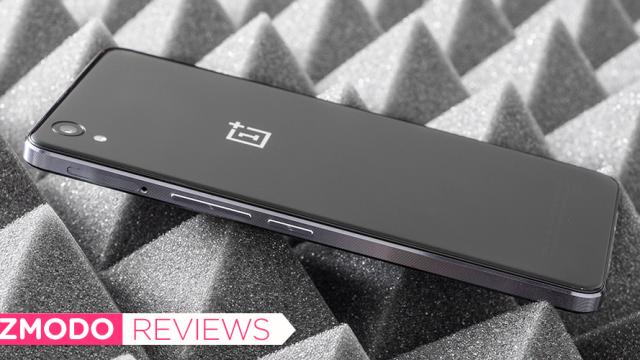When OnePlus founder and CEO Carl Pei first showed off the new X in our Manhattan office, I was impressed. Nice glass design, kind of a hybrid iPhone/Xperia look. The textbook definition of “premium.” But it’s really what he said next that got me.
“It’s $US250.” Wait…..what?
That’s the exact reaction the OnePlus X is going for with the new X — a super affordable smartphone that doesn’t look the part. It’s a conundrum because while the OnePlus isn’t a perfect smartphone, its ludicrously low price makes it hard not to recommend if you’re hunting for the very best for the very least.
But alas I must because for just a little more you can get a OnePlus 2, which is by most accounts, a better phone.
What Is it?
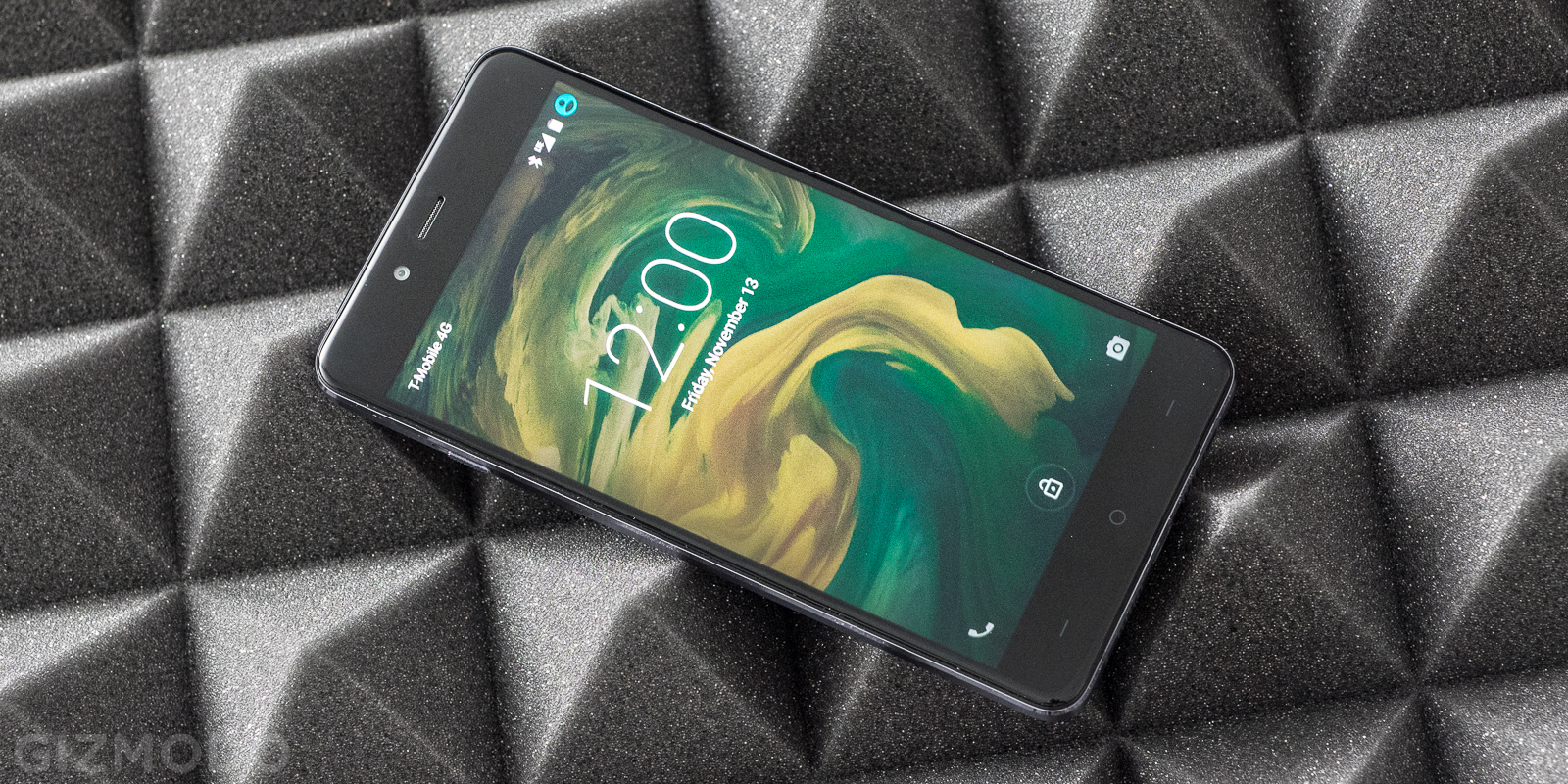
A $US250 16GB smartphone from Chinese smartphone maker OnePlus, creators of the highly lauded OnePlus One in 2014. In fact, this phone runs on the same processor, the Snapdragon 801, and OnePlus’ Oxygen OS, which originally debuted on the OnePlus 2. The X comes in two different options.
First there’s Onyx, which is just a straight forward black and chrome design. Then Ceramic, which looks very similar but instead sports an all-ceramic backplate and is a bit more hefty and pricey because of it.
OnePlus is royalty among the smartphone affluent, but still a stranger to basically anyone else. The look and price of the OnePlus X could help the company makes its way into the pockets and purses of people outside its little mobile bubble of influence.
But more importantly, it’s one of the most intriguing entrants in the growing list of cheap smartphones. The Nexus 5 showed that you can make something great that’s cheap, but not necessarily great-looking. OnePlus X tries to tick off all those boxes:
- Cheap.
- Works well.
- Looks great.
Let’s see how it did.

Design
The most remarkable thing about this phone is the way that it looks. If you’re seriously considering the OnePlus X, design is probably one of the top reasons why. In terms of specs, it’s admirable at $US250, but nothing else about it really screams MUST HAVE. Yet the design is a force to be reckoned with because this is up there as one of the best looking Android phones in 2015.
It’s not plastic-y like the Nexus 5X, not decidedly mid-tier like the Moto G, and not an Apple wannabe like the HTC A9. Like I said, it pulls a few visual cues from Sony’s Xperia lineup (front and back glass panes) and Apple’s iPhone (bubble up glass display like the 6), but it stands on its own.
On the right is the SIM tray that lets you pack in a nano SIM and a microSD card or microSIM, whichever you prefer. Right below that are the volume and power buttons. I wish OnePlus would have added one more design influence on the list and co-opted Motorola’s different key textures to help differentiate between the power button and volume rocker, but it’s a little thing.

On the left, one of OnePlus 2’s more standout features returns with a three-setting slider that can silence all notifications or only let the priority ones slip through. On the bottom of the AMOLED display, there are actually three haptic navigation buttons, but you can add-on software navigation if you prefer thanks to OnePlus’ own Oxygen OS. A 3.5mm headphone jack and a microUSB charging port(not USB Type-C) rounds out the tour.
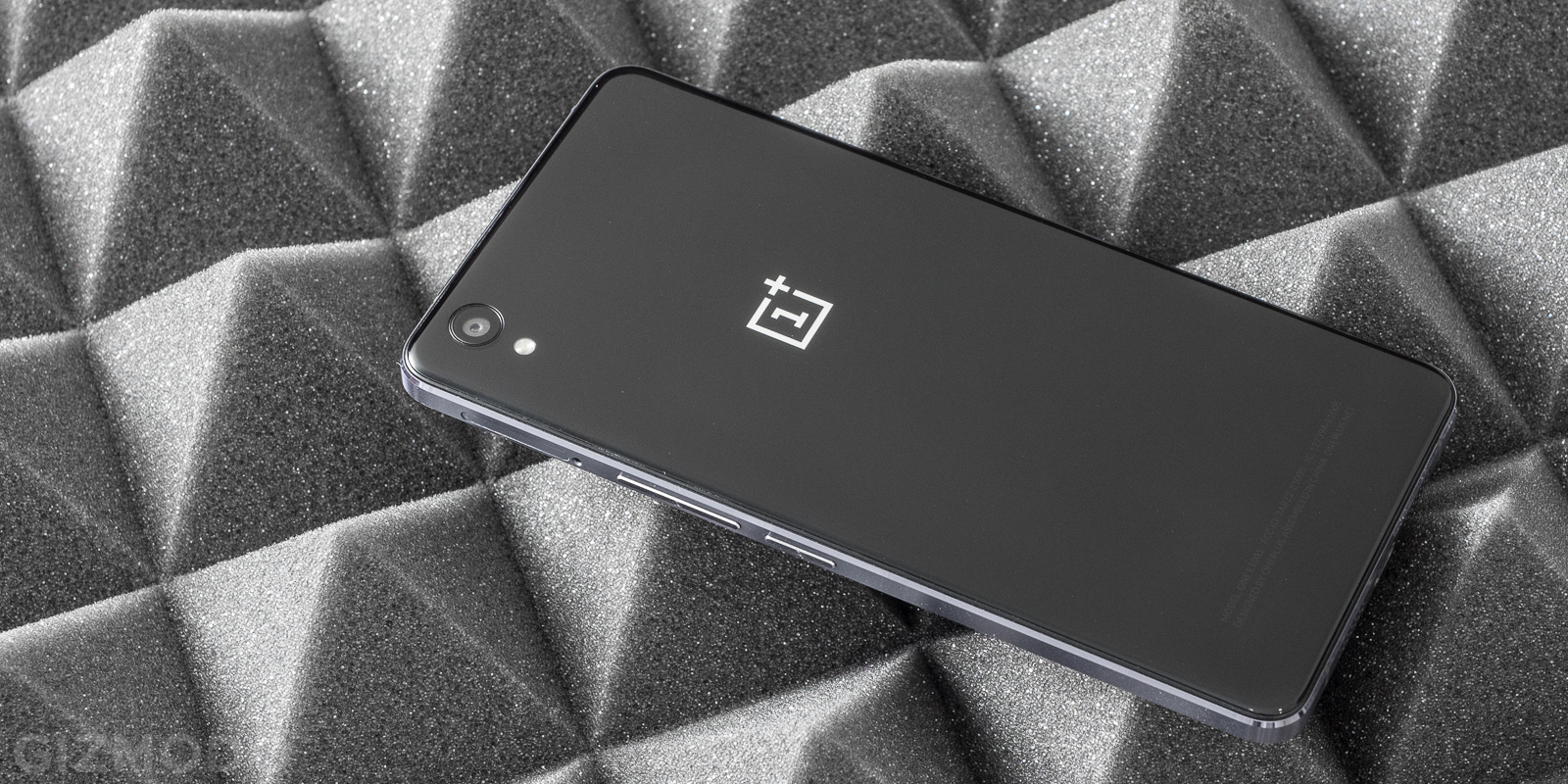
The OnePlus X seems like it was crafted specifically to appeal to my personal tastes. It takes the Xperia design approach, which I’ve already waxed poetic about before, and combines it with the same slightly rounded, bubble-up display on the new iPhone 6 and 6s to make a phone that is just damn good-looking. Yes, two panes of glass means fragility and fingerprints — lots of fingerprints — but I’m sure-handed and on an all-black device, the prints didn’t bother me so much.
The bezel has seven etched lines that wrap around the edge, that reminded me a bit of the styling Samsung puts on its Galaxy S smartphones with the S4 and S5. It’s implemented much more elegantly here, but it’s not exactly my favourite. Still, this is a very “to-each-their-own” kind of critique.
Despite all the talk of premium materials, just the fact that this phone is only 5-inches is incredibly refreshing. I can actually hold it firmly, reach everything on the screen comfortably, and get it in and out of my pocket no problem.
Finding design faults with the OnePlus X as a $US750 device would be tricky. At one-third that price, it’s even more amazing. I guess what I’m trying to say is that I like it, and it’s good.
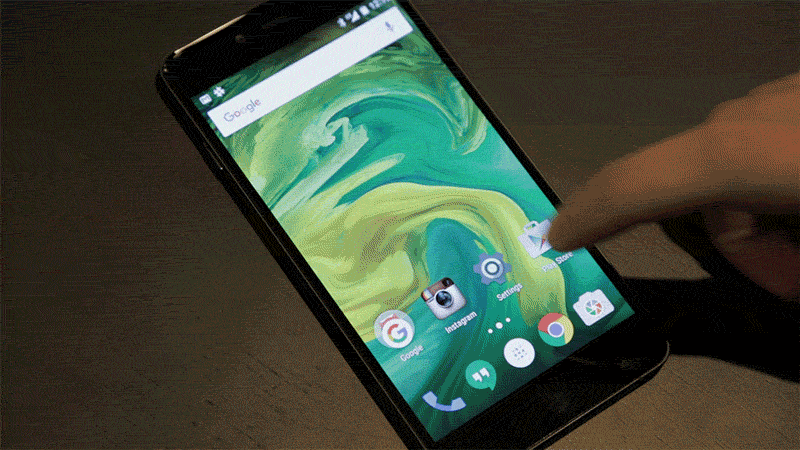
Using It
Right now, the X has two out of three — great design and price. But how well does it perform? The short answer: It’s kind of a mixed bag.
Despite what many would call an aged processor, the OnePlus X doesn’t feel any less zippy than other flagship phones out there. The Snapdragon 801 is a 32-bit processor rather than a 64-bit like the 808, 810, and Apple’s A series processors, meaning it doesn’t handle RAM management as efficiently as some newer devices. But after hoping in and out the app carousel, while listening to Spotify and playing Clash of Clans and then firing out a quick email, the OnePlus X handled these tasks easily.
Sometimes, if I’d return to the homescreen after a particularly long binge-watching session of The West Wing, the phone would get hung up a second or two, but there wasn’t a single moment where an app crashed or I needed to restart the phone for whatever reason. Just fluid flagship performance from gaming, to productivity, to texting.
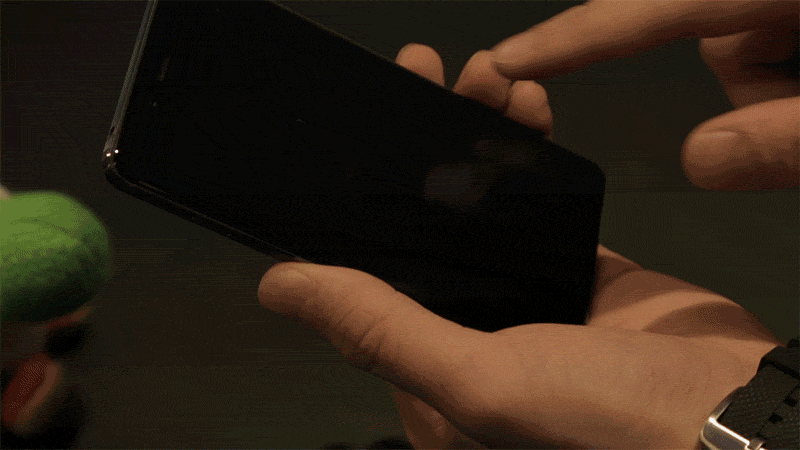
OnePlus includes several gesture shortcuts for launching the camera, flashlight, etc.
I was a long-time user of the OnePlus One, giving it top marks among many of its contemporaries, and having fiddled around some with the OnePlus 2. I was sceptical that OnePlus was really able to replicate the magic that was having Cyanogen software. But I actually enjoy what they have been able to accomplish with Oxygen OS.
To the untrained eye (or an eye that simply doesn’t give a shit), the OS looks just like stock Android. And unlike other phone makers, OnePlus doesn’t add on gratuitous applications you’re never going to use. In fact, they only add one: an FM radio application called OnePlus Radio. Other than that, it’s all the applications you actually want on your phone.
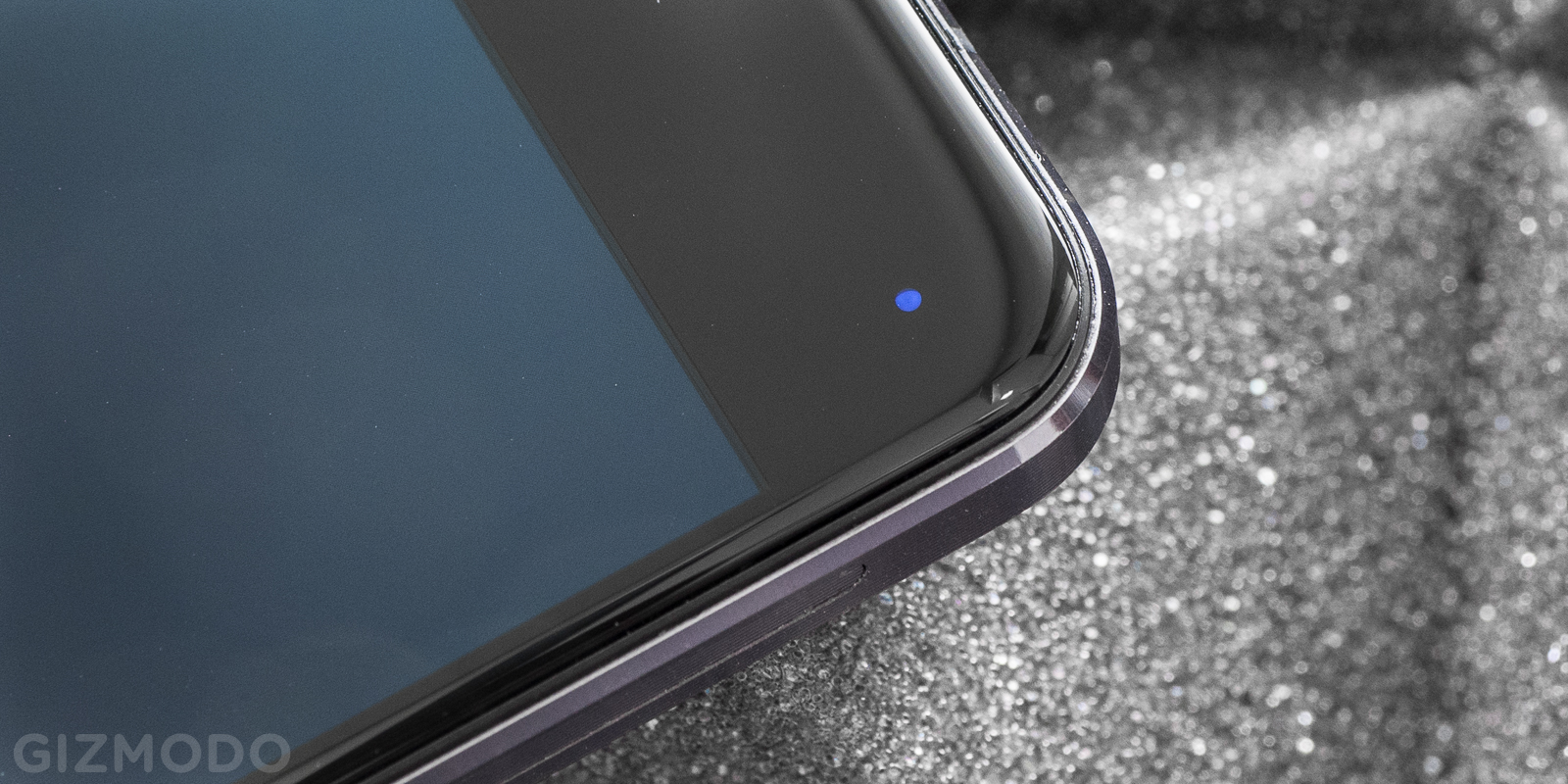
But what I really love about Oxygen OS is its customisation options. Dig into settings a little bit and you can find lots of neat tricks. You can turn on software navigation keys or use the haptic keys buried in the bottom bezel. You can select an accent colour for the entire OS, reassign navigation button short cuts, and even change the LED colour on the top right corner above the display so you can get basic info at a glance.
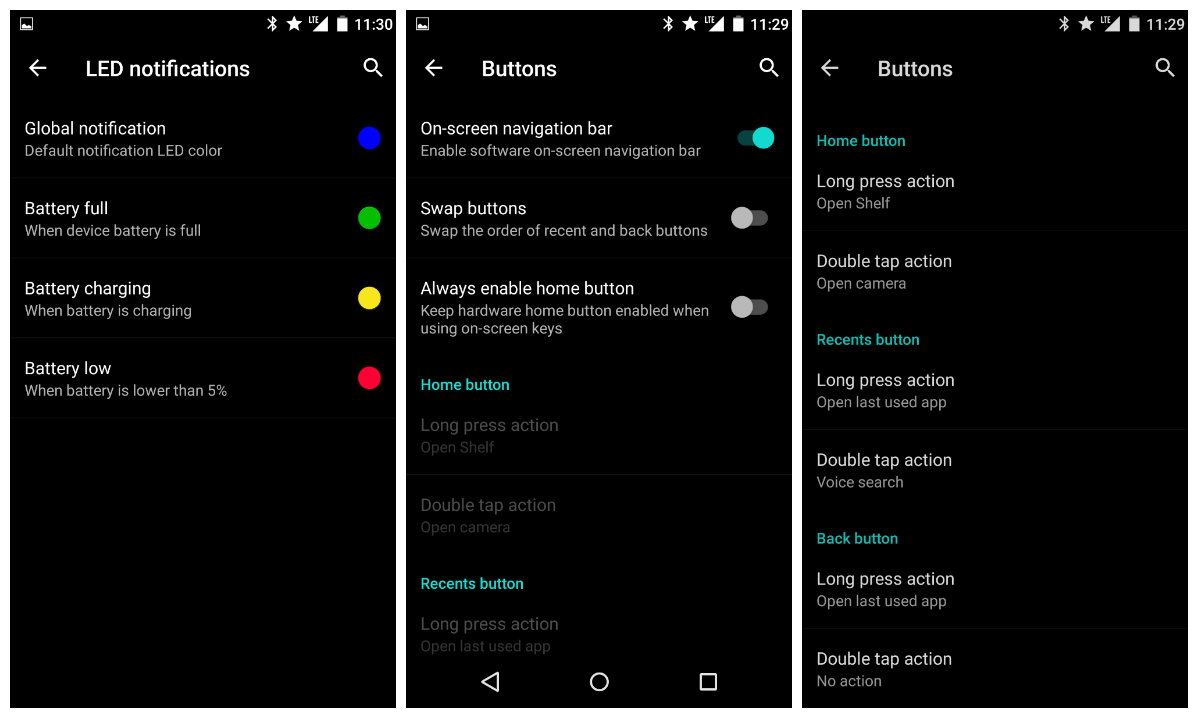
Unique Oxygen OS options for shortcuts and notifications (notice onscreen navigation in the middle).
Really, the only thing I don’t like about Oxygen OS is its Shelf feature, which is the menu accessed when you swipe right from the home screen. (It’s where Google Now, My Magazine, or Blinkfeed is on other Android devices.) It just isn’t really that helpful. There’s a frequent apps pane, frequent contacts, and you can attach any widget you’d like. But I’d rather use the apps carousel for recent apps. I honestly don’t call people enough for a large recent contacts widget, and all the other widgets I can just put on the homescreen like always. It’s just redundant and not nearly as useful as Google Now, but it’s optional and you can just switch it off in settings.
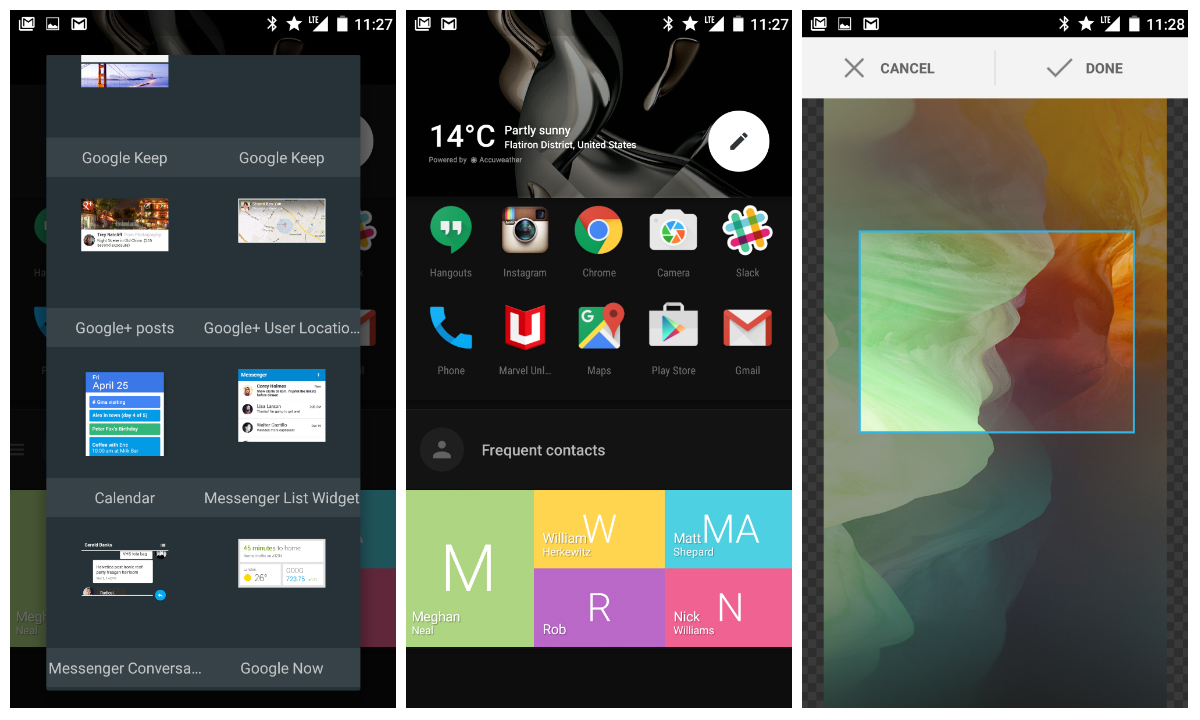
The Shelf and included customisation options.
Oxygen OS is also based off of Lollipop and though Pei says Marshmallow capabilities are coming, they’re not committing to a firm date for when the new version will be available. Luckily, Oxygen OS brings some Marshmallow features already with app permissions, customisable quick settings, and even its own implementation of the Android Sensor Hub — the neato little feature that stretches battery life while your phone is idle.
Speaking of battery life, the OnePlus X comes with a concerningly small 2525mAh battery, so the OS also ships with a dark theme by default so the X can take advantage of its AMOLED display. Remember: AMOLED means the screen activates individual pixels, so if something is black that pixel is turned off. That makes for blacks so dark that they bleed into the surrounding onyx-coloured bezel, which benefits battery life as well. It’s a good, old-fashioned “two birds, one stone” situation.
The result is a smartphone that will last all-day if you primarily use it for notifications, calling, texting, and maybe two or three hours of other stuff, like maps, reading, or streaming video. However, one day I took the OnePlus X off the charger at 7:45am and used it heavily for two hours during a Tag Heuer press event (photos, posting to social media, wifi hotspot). My phone died later that night around 9:45pm. So if you’re a power user, bring a charger.
For $US250, the OnePlus X seems almost too good to be true. And then you get to the camera. The X’s 13MP, f/2.2 camera is so bad, I had to question if my particular review unit was broken (turns out it is). For one, the lens can’t focus accurately for shit and makes a weird ticking noise every time it tries.

Sometimes I’m able to get a shot in focus but then the image wobbles in and out, like the lens is constantly focusing, and I end up with unforgivably blurry and bad pictures. I was able to snap this picture with decent clarity, which I’ve compared with the Nexus 5X and the LG G4, considered one of the best Android cameras out there. Here’s a quick comparison:
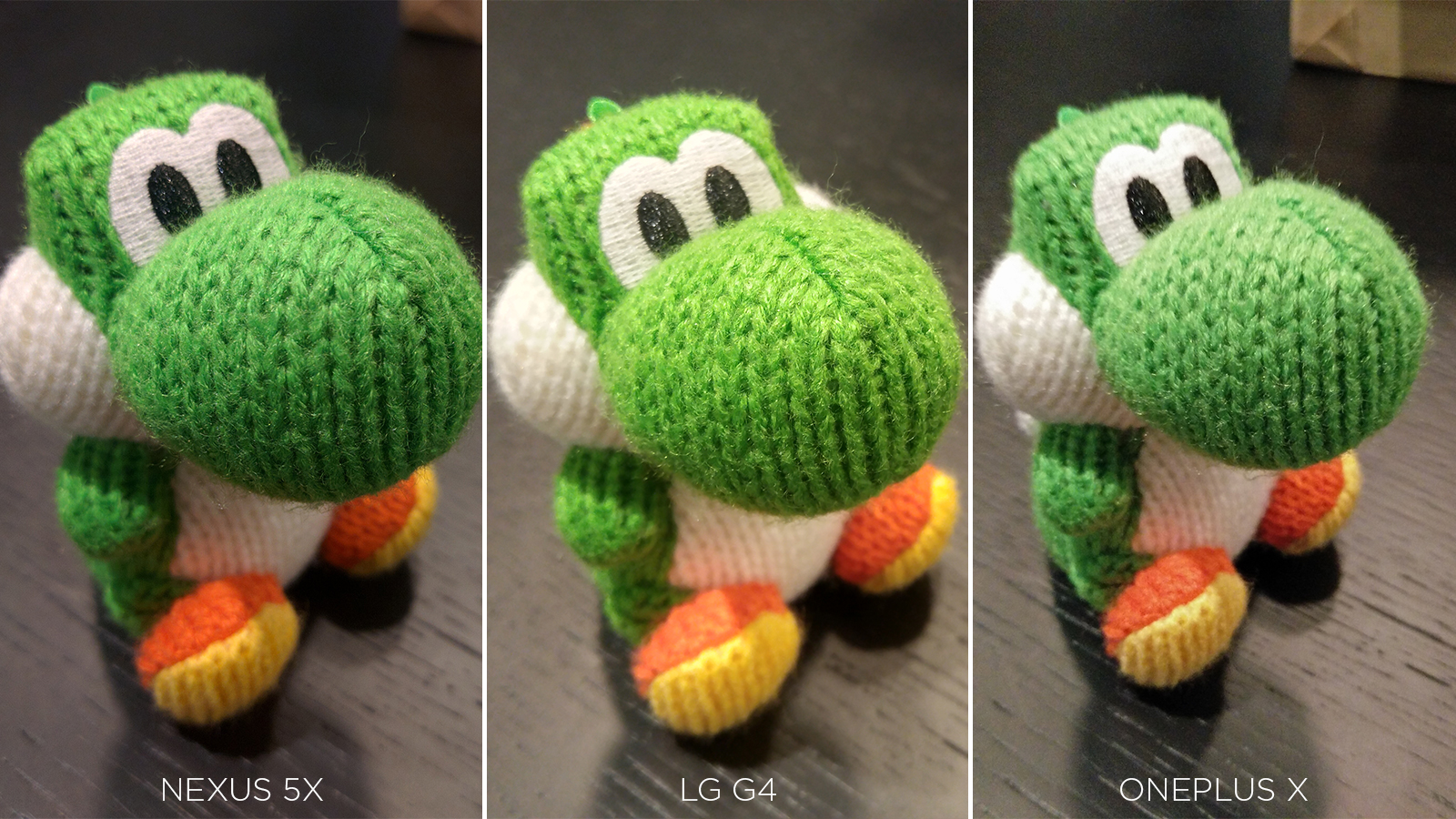
LG wins out with colour accuracy and the 5X isn’t too shabby, either. But the OnePlus X is washed out and a little unfocused (I took several shots and this was the best one).
And here’s what I was able to come up with when using normally:



So blurry and terrible.
Yeah, it’s not great! Just a general lack of detail, and the lens is a frustrating mess. I will update this post when OnePlus sends another test unit, so stay tuned. But until then, I cannot recommend the OnePlus X if you want a good smartphone camera.
Like
The look. People have describe the OnePlus X as an iPhone 5 look alike and honestly, I don’t see it. I think OnePlus has added enough of its own personality to make it stand out, especially in the sub $US300 range.
The display. This OnePlus’ first AMOLED display and it looks great. Not to mention that it’s a very palm-able 5 inches. I’m a fan.
The price. It’s incredibly competitive for a phone that looks great and a snappy operating system.
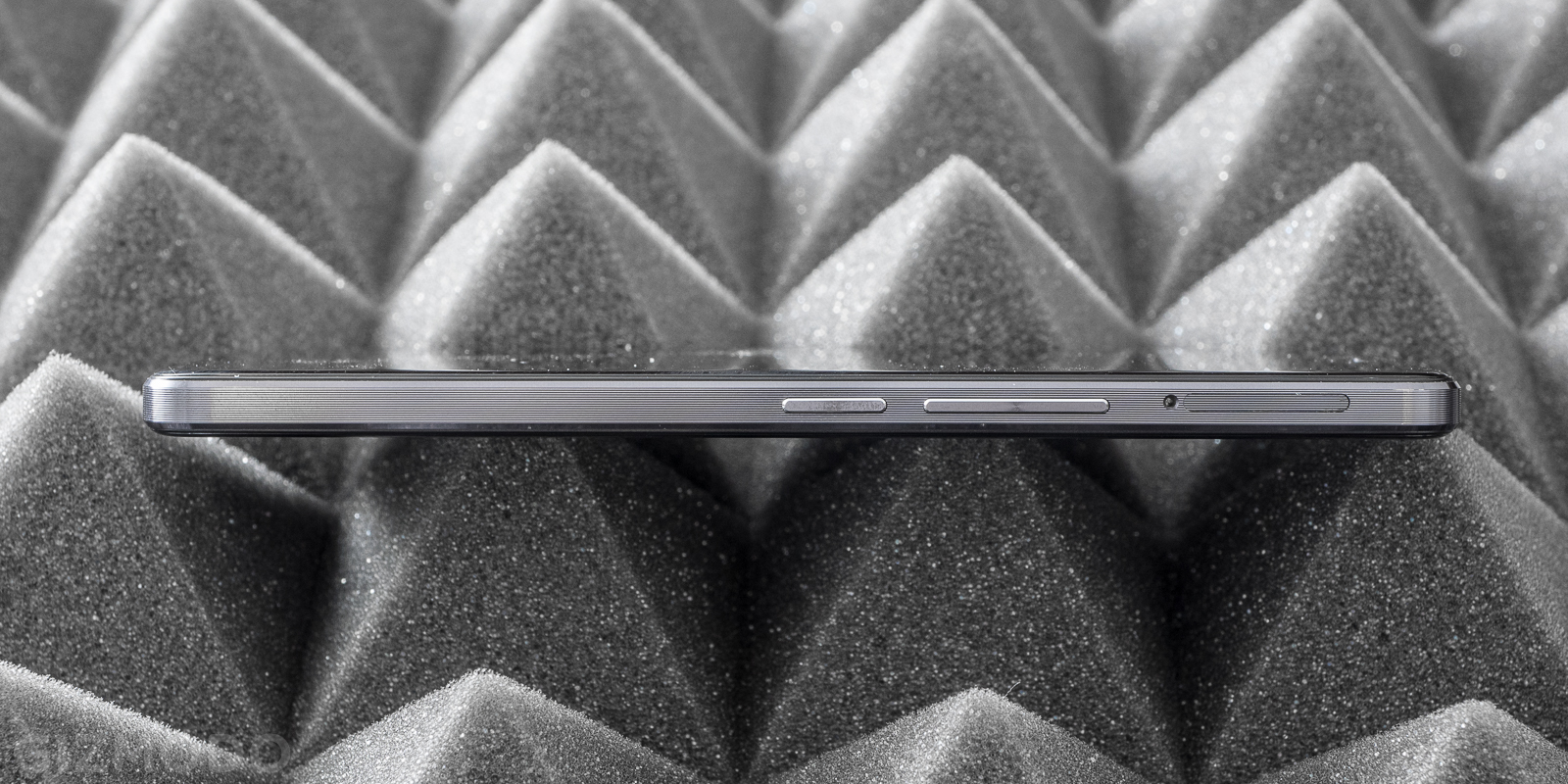
No Like
When you really scrutinise the spec sheet, there is a lot missing you might actually want: NFC, fingerprint reader, 5GHz wifi support, only 16GB onboard storage (with expandable storage but without Android flex storage), and USB Type-C. That last one would be especially nice since the phone has no removable battery and is prone to draining within 20 or so hours. All those features are the trappings of a truly premium (and expensive) phone, which the OnePlus isn’t.
The camera. No way that this comes close to being the best Android cam out there, even though my unit has mechanical issues. Either way, I’m questioning quality or longevity here, neither of which is a good thing.
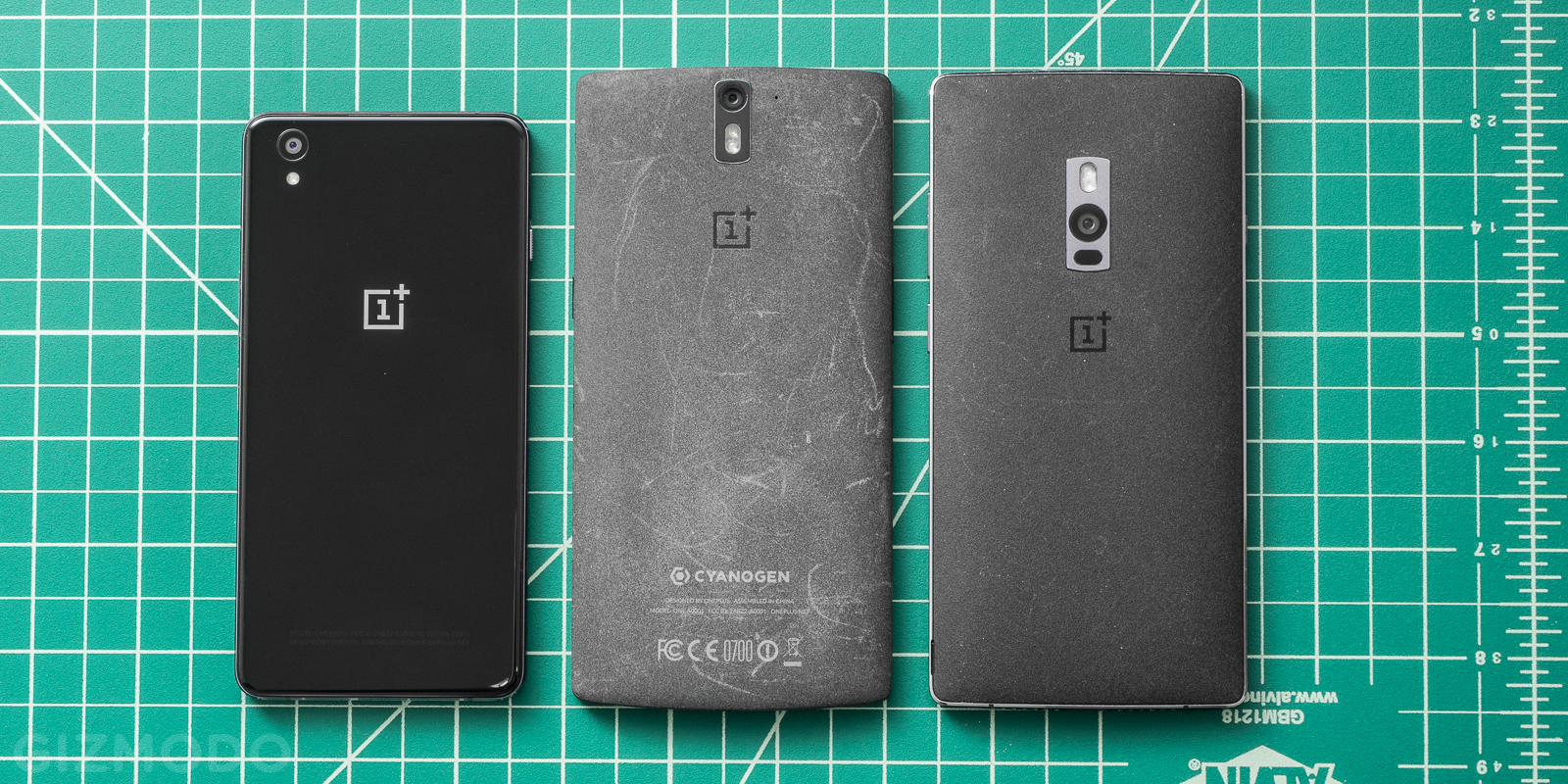
Should You But It
I wouldn’t. For just $US80 more you can get the OnePlus 2 (on the far right) that’s overall a better phone.
The X is one of the most interesting sub $US300 phones I’ve used in a long time. From display, to processor, to operating system, I have no problems. But it does cut out a lot of hardware you might want. I personally HATE not having a fingerprint sensor for quickly getting past the lock screen. I can use my Pebble watch as a trusted device sure, but that’s way less secure. Oh, and the camera is just plain bad.
Still it’s exciting to see a phone that looks this good for the price. The X isn’t quite the miracle phone it seemed when I first saw it, but it’s damn compelling. I hope OnePlus keeps working on the idea that a phone can be cheap but look otherwise.
OnePlus X Specs
- OS: Oxygen OS 2.0 based on Android 5.1
- CPU: Snapdragon 801 processor
- Screen: 5-inch 1920×1080 AMOLED (441 PPI)
- RAM: 3GB
- Storage: 16GB + MicroSD up to 128GB
- Camera: 13 megapixel rear (f/2.2 and 1080p video) / 8 megapixel front
- Battery: 2525 mAh
- Dimensions: 5.51 x 2.72 x 0.27 inches
- Colours: Onyx and Ceramic
- Price and Availability: $US250 – $US350 (depending on material); Available November 19 via invite
Images by Michael Hession
